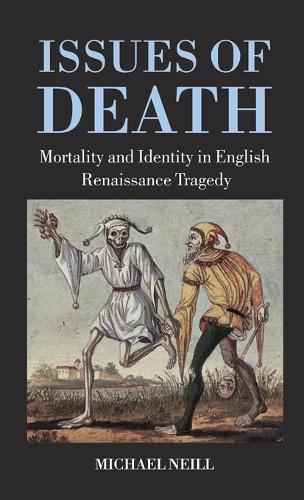Overview
Death, like most experiences that we think of as 'natural', is a product of the human imagination: all animals die, but only human beings suffer Death; and what they suffer is shaped by their own time and culture. Tragedy was one of the principal instruments through which the culture of early modern England imagined the encounter with mortality. The essays in this book approach the theatrical reinvention of Death from three perspectives. Those in Part 1 explore Death as a trope of apocalypse - a moment of un-veiling or dis-covery that is figured both in the fearful nakedness of the Danse Macabre and in the shameful 'openings' enacted in the new theatres of anatomy. Separate chapters explore the apocalyptic design of two of the period's most powerful tragedies - Shakespeare's Othello, and Middleton and Rowley's The Changeling. In Part 2, Neill explores the psychological and affective consequences of tragedy's fiercely end-driven narrative in a number of plays where a longing for narrative closure is pitched against a particularly intense dread of ending. The imposition of an end is often figured as an act of writerly violence, committed by the author or his dramatic surrogate. Extensive attention is paid to Hamlet as an extreme example of the structural consequences of such anxiety. The function of revenge tragedy as a response to the radical displacement of the dead by the Protestant abolition of purgatory - one of the most painful aspects of the early modern re-imagining of death - is also illustrated with particular clarity. Finally, Part 3 focuses on the way tragedy articulates its challenge to the undifferentiating power of death through conventions and motifs borrowed from the funereal arts. It offers detailed analyses of three plays - Shakespeare's Anthony and Cleopatra, Webster's The Duchess of Malfi, and Ford's The Broken Heart. Here, funeral is rewritten as triumph, and death becomes the chosen instrument of an heroic self-fashioning designed to dress the arbitrary abruption of mortal ending in a powerful aesthetic of closure.
Full Product Details
Author: Michael Neill (Professor of English in the Department of English, Professor of English in the Department of English, University of Auckland)
Publisher: Oxford University Press
Imprint: Clarendon Press
Dimensions:
Width: 14.50cm
, Height: 2.80cm
, Length: 22.40cm
Weight: 0.708kg
ISBN: 9780198183860
ISBN 10: 0198183860
Pages: 420
Publication Date: 01 May 1997
Audience:
Professional and scholarly
,
Professional & Vocational
Format: Hardback
Publisher's Status: Active
Availability: To order

Stock availability from the supplier is unknown. We will order it for you and ship this item to you once it is received by us.
Reviews
Absorbing....[Neill is] a superlative listener in the tragic graveyard, catching the subtle cries and whispers, and vividly conveying the horrid arts of death. --Times Literary Supplement Neill's concern with the way things work out on the stage constantly illuminates shadowier aspects of the society at large. --London Review of Books
Absorbing....[Neill is] a superlative listener in the tragic graveyard, catching the subtle cries and whispers, and vividly conveying the horrid arts of death. --Times Literary Supplement<br> Neill's concern with the way things work out on the stage constantly illuminates shadowier aspects of the society at large. --London Review of Books<br>




